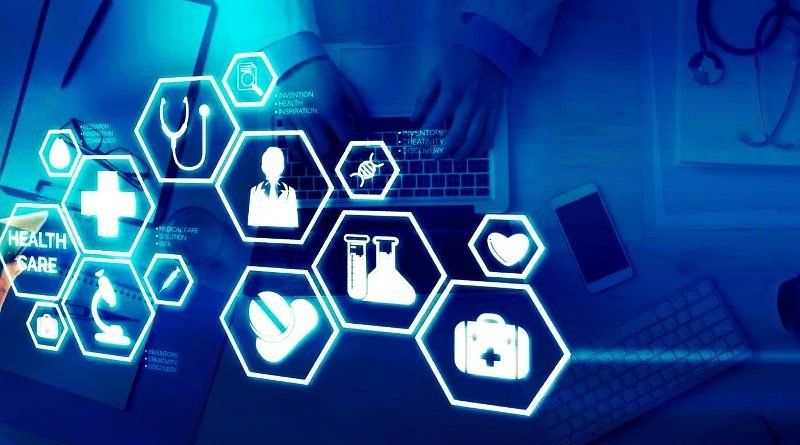The Impact Of Electronic Health Records On Pharmacy Workflow Efficiency
In healthcare, technology has been a game-changer in more ways than one. One particularly noteworthy transformation has been the integration of Electronic Health Records (EHRs) into various healthcare settings, including pharmacies. EHRs have ushered in a new era of efficiency and organization, streamlining workflows and revolutionizing pharmacy operations. Chadwick Robertson, pharmacist, discusses the significant impact that Electronic Health Records have had on pharmacy workflow efficiency.
What Are Electronic Health Records (EHRs)?
Before diving into the impact, let’s first understand what Electronic Health Records are. EHRs are digital versions of a patient’s paper charts that contain their medical history, diagnoses, medications, treatment plans, and other important healthcare information. These records are designed to be accessible to authorized healthcare professionals, making it easier to manage patient care across different healthcare settings.
Seamless Patient Information Access
One of the key ways EHRs have improved pharmacy workflow efficiency is by providing seamless access to patient information. Historically, pharmacists had to rely on handwritten prescriptions or phone calls to get information about a patient’s medications and medical history. This process was time-consuming and often prone to errors. With EHRs, pharmacists can quickly access a patient’s comprehensive medical history, allergies, and current medications at the touch of a button. This saves time and ensures accuracy in dispensing medications, reducing the risk of harmful interactions.
Enhanced Medication Safety
Medication errors are a serious concern in healthcare, and pharmacies are no exception. EHRs have significantly improved medication safety by reducing the likelihood of errors caused by illegible handwriting or miscommunication. With EHRs, prescriptions are electronically generated, eliminating the possibility of misinterpreting a doctor’s handwriting. Additionally, the system can flag potential medication interactions or allergies, alerting pharmacists to potential risks before dispensing medication.
Efficient Prescription Management
EHRs have transformed the prescription management process. Previously, patients would often need to carry paper prescriptions to the pharmacy physically. This caused delays and posed challenges if patients lost their prescriptions. With EHRs, prescriptions can be sent electronically by the healthcare provider to the pharmacy, reducing the need for paper and streamlining the process. This digital transmission also allows pharmacies to process prescriptions more quickly, reducing patient wait times.
Automated Refill Requests
Managing prescription refills has become significantly more efficient with EHRs. Patients no longer need to call their doctors to refill their prescriptions; instead, they can request refills through the EHR system. This automation reduces the administrative burden on healthcare providers and allows pharmacists to focus on more critical tasks. Pharmacies can receive refill requests electronically, making prioritizing and fulfilling requests on time easier.
Streamlined Communication
Effective communication between healthcare providers is crucial for patient care. EHRs facilitate seamless communication between doctors, nurses, and pharmacists. If a prescription needs clarification or adjustment, pharmacists can communicate directly with the prescribing physician through the EHR system, avoiding time-consuming phone calls or faxes. This streamlined communication ensures patients receive accurate and appropriate medications without unnecessary delays.
Data-Driven Insights
EHRs also offer a treasure trove of data-driven insights that can help pharmacies optimize their operations. By analyzing prescription patterns, medication adherence rates, and patient outcomes, pharmacies can make informed inventory management, staffing, and patient education decisions. These insights empower pharmacies to meet patient needs and improve overall healthcare outcomes proactively.
Improved Workflow Efficiency
Overall, integrating EHRs into pharmacy workflows has led to a remarkable improvement in efficiency. Pharmacists can spend less time on administrative tasks and more on patient care. Automating various processes, from prescription entry to medication dispensing, allows pharmacists to serve more patients in less time. This improved efficiency benefits the pharmacy staff and enhances the patient experience, reducing wait times and ensuring that patients receive the care they need promptly.
Conclusion
The impact of Electronic Health Records on pharmacy workflow efficiency cannot be overstated. Chadwick Robertson, pharmacist, emphasizes that these digital tools have revolutionized how pharmacies operate, transforming time-consuming and error-prone processes into streamlined, data-driven workflows. From easy access to patient information to automated prescription refills and improved communication, EHRs have paved the way for a more efficient and patient-centric approach to pharmacy practice. As technology continues to evolve, we can expect even more innovations that will further enhance the efficiency and effectiveness of pharmacy operations, ultimately leading to better patient care.

